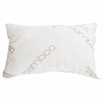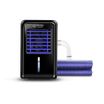- Product Description
- About Helly Hansen
Weather changes. Our sleek, protective and durable softshell can handle it.
With a hydrophobic treatment and soft, brushed-fleece lining, our Crew Softshell shields you from spray and wind, while adding warmth. The sleek cut and stretch fabric give you freedom of movement; this signature HH jacket looks as sharp in the city as it does onboard.
Features:
- YKK Zipper
- Brushed tricot inside collar
- Chest and Hand pockets with YKK zipper
- Hand pockets with brushed lining
- HH printed logo
- Waterproof Laminated Softshell Fabric
- Durable Water Repellency DWR treatment
- Bluesign product
- Recycled Content
- PFC-free DWR
Specifications:
- Fiber content: Shell: 90% Polyester Recycled, 10% Elastane - Lining: 100% Polyester
- Weight: 500g
- Windproof: 4/6
- Breathability: 4/6
- Lightness: 4/6
- Durability: 4/6
Use for:
- Coastal Sailing
- Marine Lifestyle
Care Instructions: Close zippers before washing. Do not use fabric softener. Wash with similar colours.
The story of Helly Hansen started in 1877. After many years at sea, norwegian captain Helly Juell Hansen and his wife Maren Margarethe began producing oilskin jackets, trousers, sou'westers and tarpaulins, made from coarse linen soaked in linseed oil.
They certainly struck a nerve in the market, because over the first five years they sold approximately 10,000 pieces. In 1878 the company won a diploma for excellence at the Paris Expo, and began exporting its products.
In the 20th century, Helly Hansen made several breakthroughs in product development to complete the layering principle today known as the 3-Layer System. In 1949 the Helox, a thin sheet of translucent PVC plastic sewn into waterproof coats, took over for the oilbased outerwear and became the must-have protection for outdoor use. With a production of 30,000 coats each month the success was almost immediate.
The original fleece, the fiberpile, was developed in 1961 and has been perfected for almost 50 years since. This new insulation layer was warm, lightweight and fast-drying, ideal for wearing under the protective layer. It was soon embraced by workers because it offered extraordinary insulation against the cold, and ventilated well during hard, physical work. It even protected against snow and light rain, staying extremely durable and warm after many washes.
The layering story was completed in the 1970s, with the development of LIFA. This wonder-fiber, used in LIFA, kept the skin dry and warm by pushing moisture away from the body, making it the ideal baselayer fabric for outdoor and workwear use. The latest generation of LIFA is still used in our baselayers today.
In 1980, the Helly Tech technology was launched, using both hydrophilic and microporous technology, which meant the apparel was both waterproof and breathable. This meant that anyone who participated in high-activity outdoor sports could expect their clothing to work with them, not against them. The evolution of breathable, waterproof jackets had a profound effect on the outdoor industry. Helly Hansen now produced technical outerwear garments.
The heritage from Helly Juell Hansen is still our cornerstone. Today our gear is used by world-class sailors, skiers and adventurers who spend their time between human will and nature's forces, and demand full protection and performance when the conditions are at their worst.





















































 Like Us on Facebook
Like Us on Facebook Follow Us on Twitter
Follow Us on Twitter Watch Us on YouTube
Watch Us on YouTube Read Our Blog
Read Our Blog
